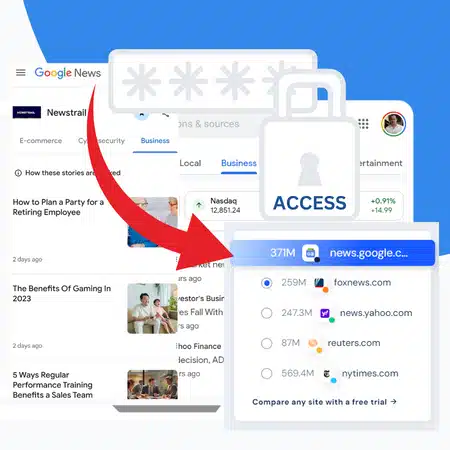Convertro was founded in 2009, by Jeff Zwelling (also the current Chief Executive Officer (CEO)), David Feldman, David Perez and Gary Gurevich. The founders built the first prototype for their previous company, the e-commerce website YLighting, to accurately measure how different marketing channels impacted each sale. They knew the simplistic yet prevalent last-click model was inadequate, and that measuring conversion across devices was crucial to develop accurate data sets on which to run attribution.
The company, with its headquarters in New York City, has 1500 employees. It serves the financial services, retail and technological sectors. Under the client names are companies like Nestlé, Time Inc., and Casper.
In 2014 Convertro was named a leader by Forrester in the Attribution space and the company was acquired by Aol. In 2015, Aol was acquired by Verizon. Both of these acquisitions have expanded the device graph and programmatic integrations of Convertro.
Convertro, a multi-touch attribution service. It combines both Marketing mix modelling (MMM) and Multitouch Attribution (MTA), but it also has a united approach through its Unified Marketing Activation Platform (UMAP). This combination comes from its AOL days. That is since AOL is a media company, it has an incentive to offer a tool to advertising buyers to amount and enhance their outlay. As such, Convertro offers a stand-alone and bundled product, based on needs. Still, Convertro combines algorithmic attribution with aggregate data for inputs such as offline channels, seasonality and propensity scores.
The methodology that Convertro is based on is that of logistic regression, as well as Experimental design. Logistic regression used as a classifier. It maps the dependent variable onto an interval between 0 and 1 and so can be translated into a probability that the variable is in a particular class. Whereas, Experimental design is a framework to develop and test hypotheses using statistical methods. Experiments isolate the parameters being evaluated and hold all others constant. Usually, this is done by selecting randomly from a defined population, providing different stimuli to different groups and comparing outcomes. Traditional A/B testing divides a sample randomly, serves different experiences and compares results to declare a “winner.” Multivariate testing (MVT) uses algebraic methods to test more variations, more rapidly. Likewise, multi-armed bandit (or contextual bandit) methods aim to identify winners more rapidly with less disruption by focusing on better-performing versions.
As such, the models provide a holistically model for both aggregate data as well as consumer level data. Furthermore, the models can be customized to account for unique media and non-media factors that impact the performance of the marketing campaigns.
Traditionally, sophisticated marketers employ multiple solutions to understand marketing ROI and forecast optimal spend. Most use two separate models – Marketing Mix Modeling (MMM) and Multi-Touch Attribution (MTA) – to understand the true return on advertising investments and inform decision-making. MMM explains the 40,000-foot story to executives and leadership while MTA explains the 4-foot-high individual consumer story to media planners, buyers and technologists. Each works well in its own right. However, because the models are fundamentally different, developed using different data sets and methodologies, the results are most often inaccurate or biased when combined and cobbled together. This impacts all forms of attribution – online, offline as well as understanding the connectivity across the two domains.
Recently, the industry has moved to more closely marry these two models. Having a unified model – MMM plus MTA – that exists within a single framework enables marketers to more effectively execute and optimize their efforts. In addition, it provides a consistent and more accurate set of metrics, drives more informed decisions for the allocation of marketing budgets across channels, and helps brands and marketers understand and act on the entire customer journey to achieve key objectives. This is the key to enhancing attribution, at large.
Convertro launched its own unified service, namely the Unified Marketing Activation Platform (UMAP). UMAP adds all of the benefits of MMM on top of impressive MTA to deliver hyper-accurate evaluations of omni-channel marketing measurement and campaigns.
The allure of Convertro is that it appeals to digital marketers with large budgets and cross platform identity requirements. In addition, the company offers media performance and pricing benchmarks. This edge that the company has is underpinned by its trade marked technology, that of Unified Marketing Activation Platform (UMAP). This technology combines user and aggregate data within a single model to measure marketing impact. The platform itself – the technology – is critical. Advertisers and agencies want data and science in an advanced tool that empowers the users. For instance, we pride ourselves on being an open platform that has system-to-system integrations with many SEMs and DSPs for faster activation of spend recommendations. That connectivity is key within our industry – and we are the leader in providing a flexible and integrated solution to partners. However, Convertro also provides an intuitive interface that lets users focus on the insights that can move their business forward. This combination of capabilities and streamlining is hugely powerful.
Furthermore, the company automated data ingestion of performance and spend data from over 80 marketing technology systems. All marketing touchpoints back to consumers using deterministic data only. Probabilistic methods have an average 30% error rate which translates into wrong attribution and wasted spend. Plus, Convertro has access to unique data points provided by AOL and Verizon, which add layers of accuracy and consumer insight available through no other measurement provider. The company also applies Javascript and pixel tracking tags to all digital paid media activity, ensuring real-time data collection. It also allows Convertro to drive user de-duplication which improves accuracy.
This solution is, therefore, to be considered if you need to include the impact of television and radio in your measurement project or need detailed media benchmarks to guide planning. As well as, if you’re a B2B marketer requiring econometric, user-level data and modelling (25%-50% of AOL Convertro’s customers are B2B marketers, primarily media companies).







